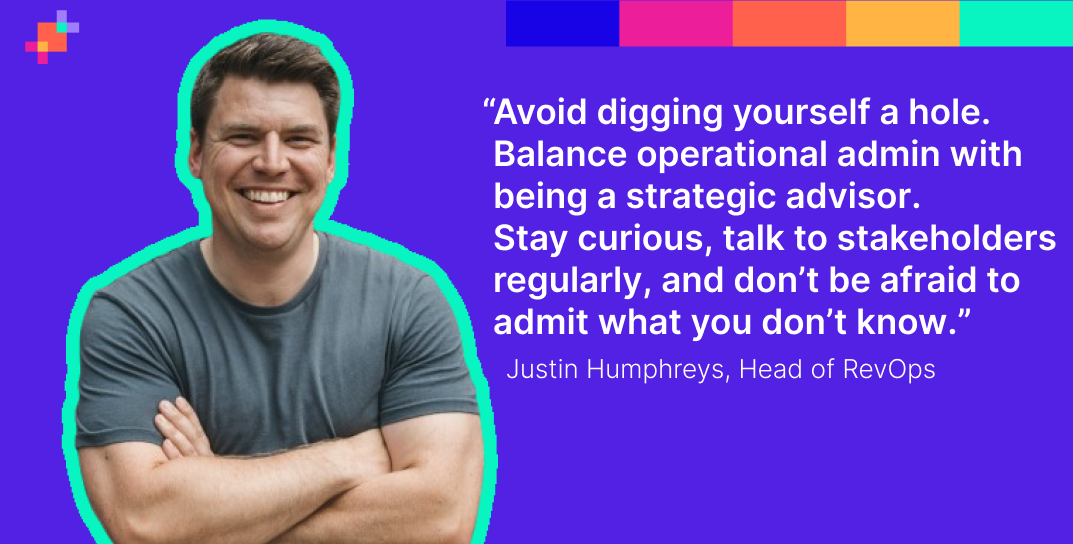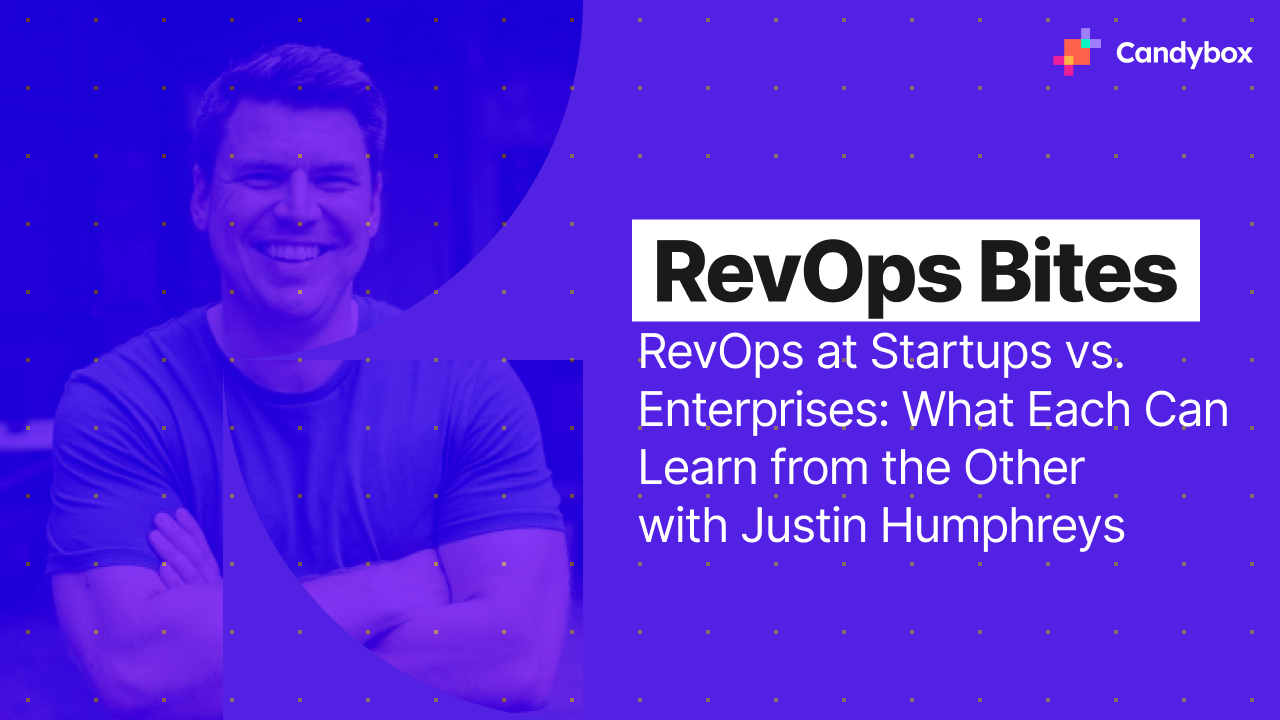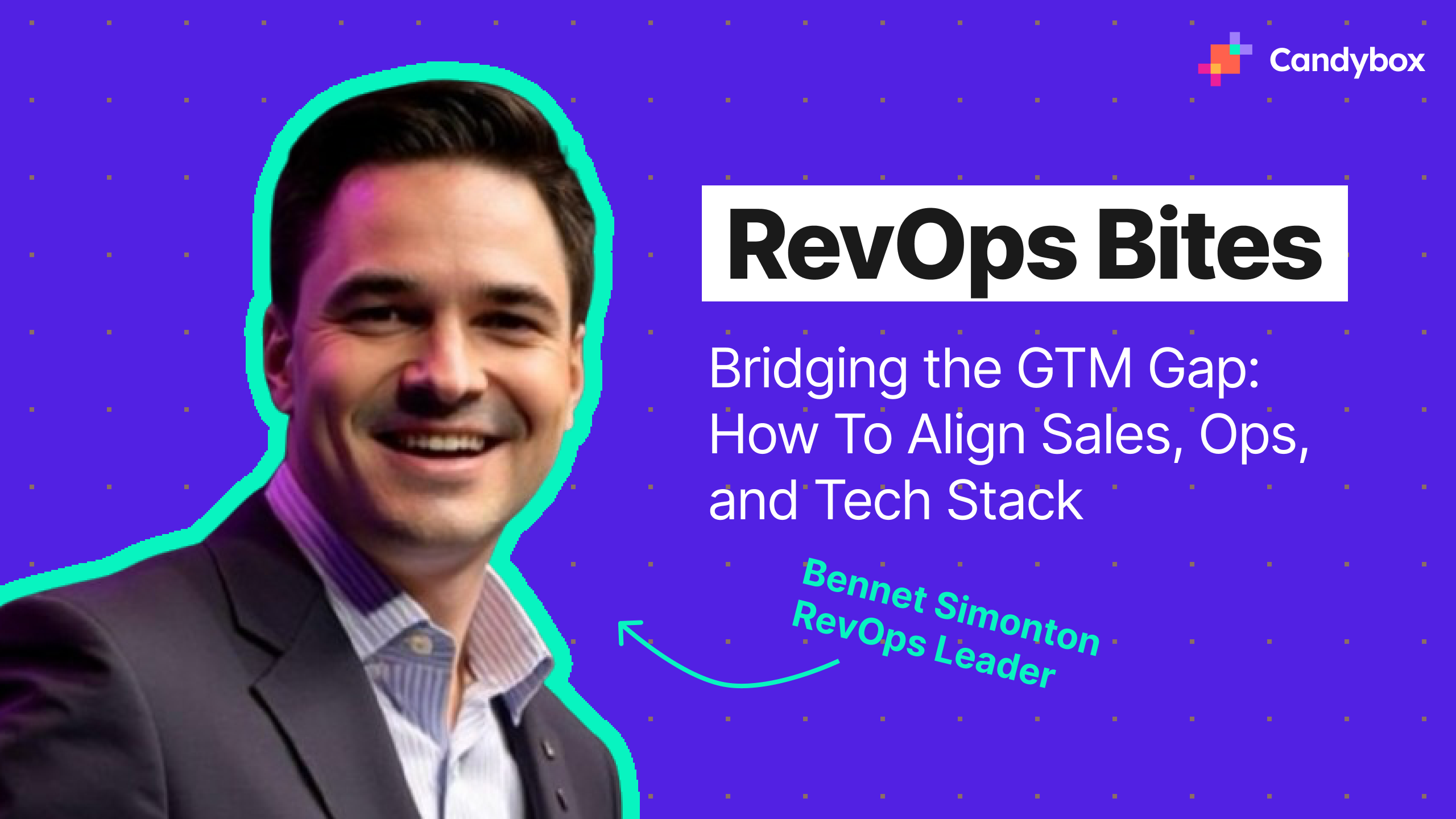When you’ve spent 13 years in Revenue Operations, you’ve seen a little bit of everything, from sprawling enterprise orgs with specialized teams to scrappy startups where one person does it all.
That’s the journey of Justin Humphreys, Head of RevOps at Bright Network and part-time strategic advisor for scaling companies. In this episode of RevOps Bites, Kathryn sat down with Justin to explore the contrasts between RevOps in small and large companies, what each can learn from the other, and how to strike the balance between tactical execution and strategic influence.
Falling Into RevOps and Staying for 13 Years
Like so many in the field, Justin didn’t set out to build a career in RevOps. After a graduate scheme at Vodafone, he landed a Salesforce administrator role without really knowing what Salesforce was at the time.
Fast-forward over a decade, and RevOps has become his career anchor:
"I had no idea what Salesforce was, but it was a paid job with security. Thirteen years later, I’m still working with CRMs in RevOps."
Startups vs. Enterprises: The Big Differences
Justin has lived in both worlds: large enterprises with layered ops teams, and startups where RevOps is brand new. He highlighted a few core differences:
- Structure: Enterprises split into specialist teams (Sales Ops, Marketing Ops, CRM Admin, Developers). Startups usually lean on one or two people to handle everything.
- Stakeholder proximity: In big orgs, ops often serve internal tickets. In startups, every action is visible and directly tied to frontline teams.
- Investment mindset: Enterprises are forced to invest in RevOps as they scale. Startups often hesitate due to cost—until inefficiencies make it unavoidable.
This creates two extremes: either building from scratch, or untangling spaghetti systems cobbled together without proper RevOps expertise.
Educating a Company on What RevOps Is
When Justin became the first RevOps hire at Bright Network, his challenge was showing that RevOps isn’t just "fixing Salesforce bugs."
His solution? Run an end-to-end audit across the customer lifecycle, from marketing to renewals, and map the gaps with a simple RAG (red-amber-green) status view.
This visualization did two things at once:
- Educated leadership on the scope of RevOps.
- Invited collaboration: teams began approaching him with problems connected to the areas he’d flagged.
The key takeaway here is: visibility builds credibility.
Empathy Over Ego
One of Justin’s strongest points was the role of empathy in driving change. When inheriting systems built without ops expertise, it’s easy to criticize past decisions. But building trust means understanding why things were done that way.
"Empathy is the biggest thing. Understand the rationale behind past decisions. People did their best with the knowledge and resources they had."
By softening critique and approaching with curiosity, RevOps pros can drive change without alienating stakeholders.
The "So What?" Filter
For Justin, one of the most powerful skills in RevOps is the ability to translate operational improvements into business impact.
It’s not about shiny new features. It’s about asking the “So what?” every time:
- This automation is cool → So what? It saves the sales team 10 hours a week.
- This dashboard looks great → So what? It gives leadership real-time visibility into forecast risk.
That ability to convert operational benefit into business value is what separates trusted advisors from task executors.
Consulting & the Rise of Fractional RevOps
Justin also shared insights from his consulting work with smaller companies:
- Many early-stage companies make costly mistakes like over-investing in Salesforce without expertise.
- Fractional or advisory RevOps can help startups avoid those mistakes without the cost of a full-time hire.
- The trend is growing as technology becomes easier to implement and remote work expands the talent pool.
His playbook for helping small companies prepare to scale always starts with the CRM: understanding what they have, how it’s being used, and whether the tech fits their actual needs.
Advice for First-Time RevOps Hires
Justin’s closing advice was simple but critical:

RevOps is about connecting dots across the business. The faster you learn to balance the day-to-day with the bigger picture, the faster you become a true driver of growth.
Final Thoughts
RevOps at a 10,000-person enterprise and a 20-person startup might look worlds apart—but Justin’s experience shows that the principles remain the same: empathy, visibility, and business alignment.
Whether you’re the only ops hire or part of a large team, asking “So what?” and leading with empathy will always earn trust.
Watch the full RevOps Bites episode with Justin here:











.png)

